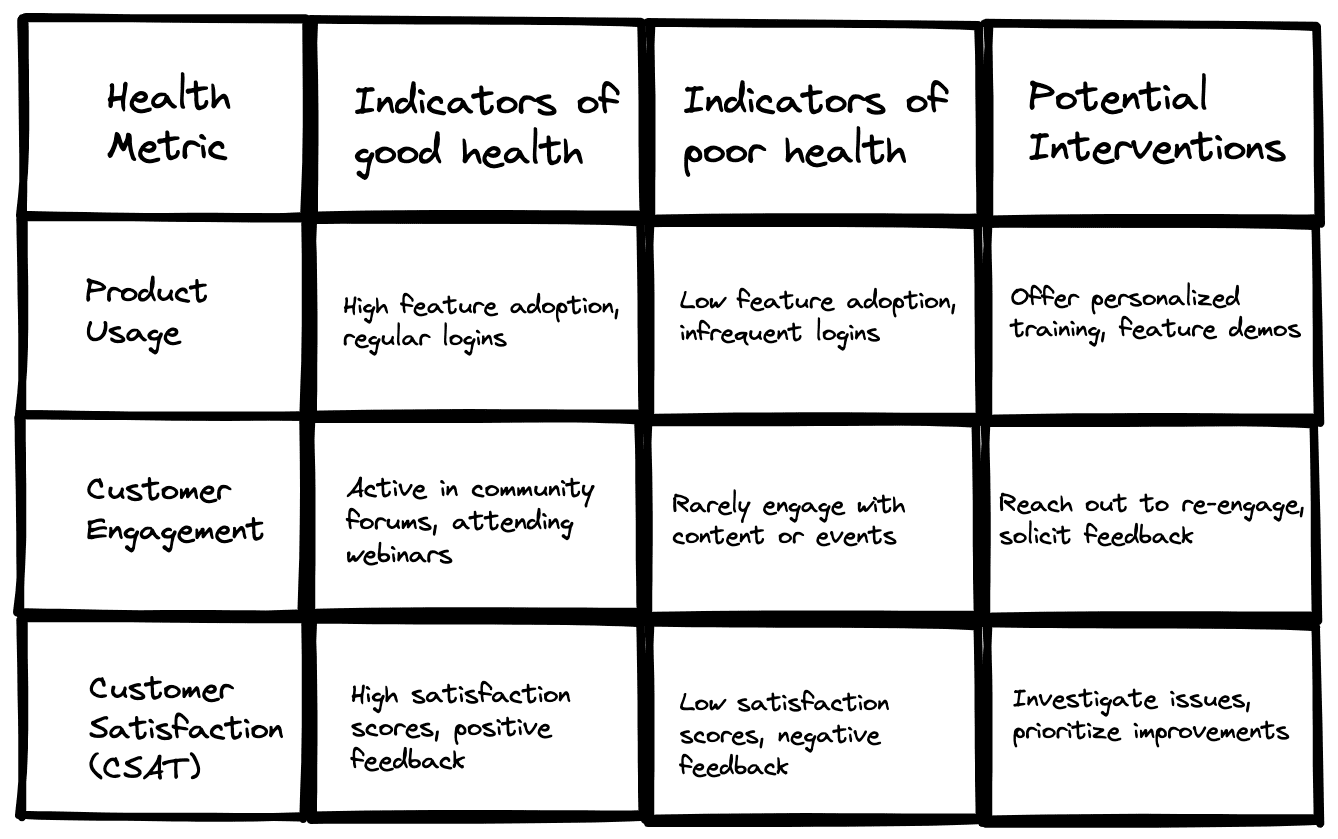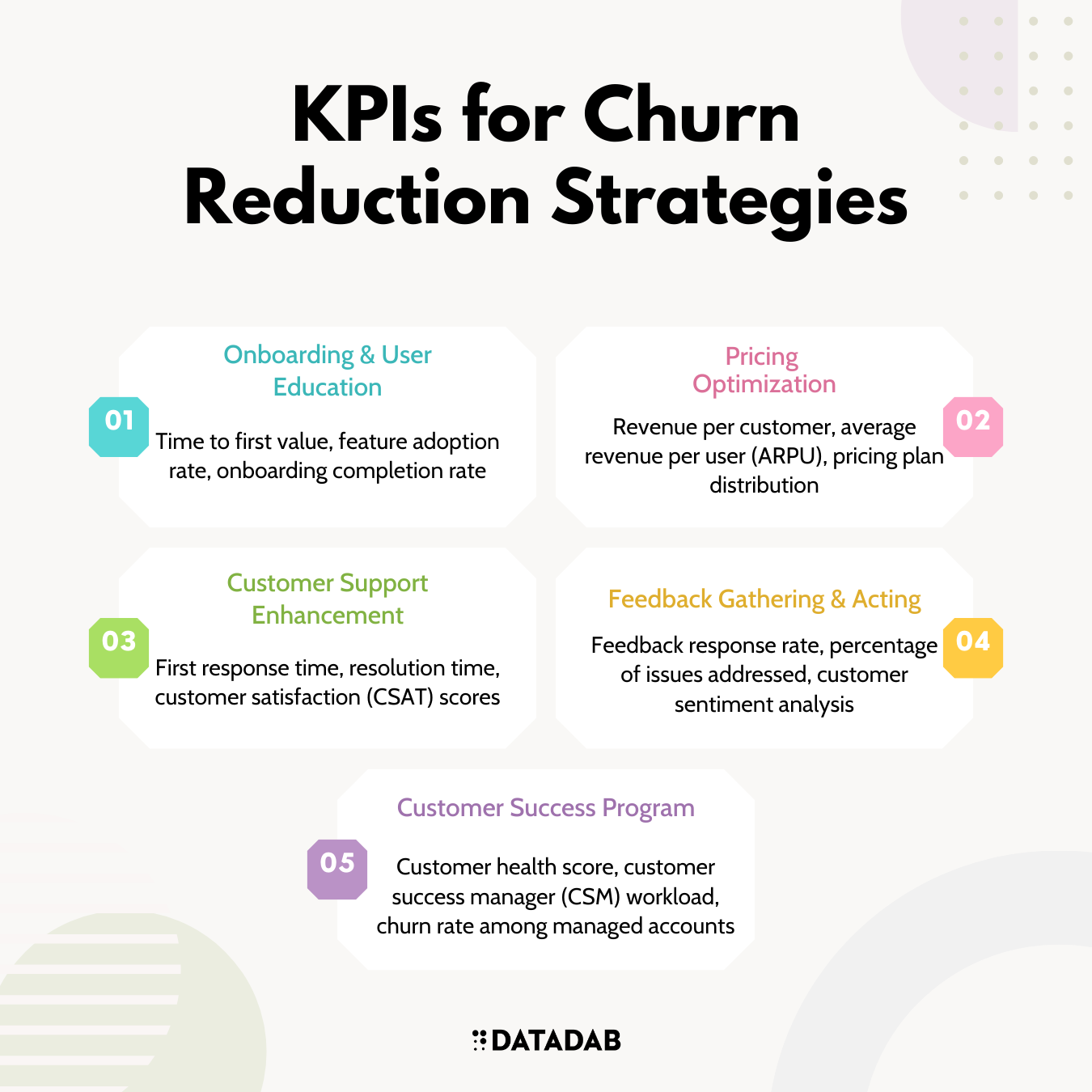"The secret to combatting churn lies in understanding the unique needs, expectations, and challenges of each customer, and tailoring your approach accordingly."
Ah, churn. The nemesis of every SaaS marketer and the pesky fly that just won't leave your growth party. Churn is the single most powerful force capable of knocking the wind out of your business's sails. It's that persistent headache that never seems to go away, no matter how many cups of coffee you down to power through it.
In the SaaS world, churn is the all-too-familiar story of customers who leave your service and the resulting loss of revenue. As a SaaS marketer, you understand that acquiring new customers is essential, but it's not the whole picture. Focusing solely on acquisition without addressing the problem of churn is like building a house of cards—one wrong move, and it all comes tumbling down.
Fear not, fellow SaaS marketers, for we're about to embark on an epic journey to tackle churn head-on. Together, we'll explore the mysterious world of SaaS churn, uncover its causes, and arm ourselves with the knowledge and strategies needed to combat it. So, buckle up and get ready for an adventure in understanding SaaS churn.
Our quest is divided into five key stages:
- Defining Churn: Learn the language of churn and unravel its true meaning.
- Why Churn Matters: Discover the impact churn can have on your business and why it's worth your attention.
- Causes of Churn: Investigate the origins of churn and identify the main culprits behind it.
- Strategies to Reduce Churn: Equip yourself with battle-tested strategies to fight churn and emerge victorious.
- Final Thoughts: Reflect on the journey and gather your newfound knowledge to carry with you as you continue to grow your SaaS empire.
Now, let's embark on this exciting journey and conquer the elusive beast that is SaaS churn!
Defining Churn
Before we dive in, let's ensure we're on the same page about what churn is. In the SaaS industry, churn refers to the rate at which customers cancel their subscription to your service. Churn can be measured as:
- Customer Churn: The number of customers who leave divided by the total number of customers at the beginning of the period.
- Revenue Churn: The amount of revenue lost from cancellations divided by the total revenue at the beginning of the period.
For example, if you started the month with 100 customers and lost 5 of them, your customer churn rate would be 5%.

Why Churn Matters
If you're a SaaS marketer, you already know the importance of acquiring new customers. But focusing solely on acquisition is like trying to fill a leaky bucket—you'll never get ahead if you're continually losing customers.
High churn rates can have severe consequences for your business:
- Lost revenue: When customers leave, they take their recurring revenue with them. This can impact your ability to invest in growth initiatives or cover operational expenses.
- Negative word-of-mouth: Churned customers are more likely to share their negative experiences with others, which can harm your reputation and deter new customers.
- Higher acquisition costs: The more customers you lose, the more you need to spend on acquiring new ones to replace them. In the long run, this can drive up your customer acquisition costs (CAC).
Reducing churn, on the other hand, can have a significant impact on your business's growth. According to a study by Bain & Company, a 5% increase in customer retention can lead to a 25-95% increase in profits.
Causes of Churn
To effectively reduce churn, you need to first understand its causes. Churn can stem from a variety of factors, but we'll focus on four key areas:
- Product Issues
- Pricing Problems
- Customer Service Challenges
- Market Factors
Product Issues
Churn can often be traced back to issues with your product. These issues can range from minor usability problems to more significant concerns such as a lack of features or poor performance. Some common product-related causes of churn include:
- Unmet customer expectations: If your product doesn't deliver on its promises or doesn't meet customers' needs, they're likely to look elsewhere for a solution.
- Complexity: A product that's difficult to use or has a steep learning curve can be a significant barrier to long-term customer satisfaction and retention.
- Lack of innovation: In today's fast-paced world, customers expect regular updates and improvements. If your product stagnates or fails to keep up with competitors, customers may leave for a more innovative solution.
Pricing Problems
Pricing is a delicate balance. If your prices are too high, customers may feel they're not getting enough value from your product. On the other hand, if your prices are too low, you risk devaluing your offering and making it difficult to invest in improvements. Some pricing-related causes of churn include:
- Lack of perceived value: If customers don't feel they're getting enough value for their money, they may cancel their subscription.
- Inflexible pricing plans: Rigid pricing plans that don't accommodate varying customer needs or allow for growth can lead to churn.
- Unexpected price increases: Sudden or unexplained price hikes can cause customers to question the value of your offering and look for alternatives.
Customer Service Challenges
Exceptional customer service is critical to keeping customers happy and loyal. Poor customer support experiences can lead to churn, especially if issues aren't resolved quickly or effectively. Some customer service challenges that contribute to churn include:
- Slow response times: Customers expect prompt support, and slow response times can be frustrating and make customers feel undervalued.
- Ineffective problem resolution: If customers feel their issues aren't being addressed or resolved effectively, they may lose faith in your ability to support their needs.
- Impersonal service: Customers want to feel heard and understood. Impersonal, canned responses can leave customers feeling like they're just another number.
Market Factors
External factors outside your control can also contribute to churn. Market factors such as economic conditions, competitive pressures, and shifting customer preferences can all influence your churn rate. Examples of market factors include:
- Economic downturns: In tough economic times, customers may be more likely to cancel non-essential services or seek out lower-cost alternatives.
- Increased competition: As new competitors enter the market or existing ones improve their offerings, customers may be lured away by more compelling options.
- Changing customer needs: As your customers' businesses evolve, their needs may change, and your product may no longer be the best fit for them.
Strategies to Reduce Churn
Now that we understand the causes of churn let's explore some proven strategies to reduce it:
- Improve Onboarding and User Education
- Optimize Pricing
- Enhance Customer Support
- Gather and Act on Feedback
- Implement a Customer Success Program

Improve Onboarding and User Education
A smooth onboarding experience can set the stage for long-term customer success. By making it easy for customers to get started with your product and understand its value, you can reduce churn caused by complexity or unmet expectations. To improve onboarding and user education:
- Create clear documentation: Offer comprehensive guides, FAQs, and tutorials that address common questions and challenges.
- Offer personalized onboarding: Tailor the onboarding experience to each customer's unique needs and use case.
- Provide ongoing education: Continuously educate customers about new features and best practices through webinars, workshops, and in-app notifications.
Optimize Pricing
To address pricing-related churn, consider the following strategies:
- Evaluate your pricing structure: Regularly review and adjust your pricing plans to ensure they align with the value customers receive and the competitive landscape.
- Offer flexible pricing options: Create tiered pricing plans that accommodate different customer needs and budgets, and provide options for growth and scalability.
- Be transparent about pricing changes: Communicate any price increases well in advance and provide clear explanations for the changes.
Enhance Customer Support
Improving your customer support can have a significant impact on reducing churn. To enhance your support offerings:
- Invest in responsive support channels: Ensure customers can reach your support team quickly and easily through a variety of channels, such as live chat, email, and phone.
- Empower your support team: Provide your support team with the resources, training, and autonomy they need to resolve customer issues effectively.
- Personalize customer interactions: Train your support team to engage with customers on a personal level, empathize with their concerns, and show appreciation for their business.
Gather and Act on Feedback
Customer feedback is an invaluable resource for identifying and addressing the root causes of churn. To gather and act on customer feedback:
- Implement feedback channels: Use tools such as surveys, in-app feedback forms, and social media monitoring to collect customer feedback.
- Analyze feedback data: Regularly review and analyze feedback data to identify trends, common pain points, and areas for improvement.
- Close the loop: When customers provide feedback, let them know you've heard them and are taking action to address their concerns.
Implement a Customer Success Program
A proactive customer success program can help you identify potential churn risks and address them before they become problems. To implement a customer success program:
- Assign dedicated customer success managers: Assign a customer success manager (CSM) to each of your accounts, responsible for nurturing the relationship and ensuring the customer's ongoing success.
- Monitor customer health: Use customer health metrics, such as product usage, engagement, and satisfaction scores, to identify customers at risk of churning.
- Implement targeted interventions: Develop targeted interventions for at-risk customers, such as check-ins, training sessions, or personalized recommendations for optimizing their use of your product.
Final Thoughts
Reducing churn is a critical component of long-term success for any SaaS business. By understanding the causes of churn and implementing targeted strategies to address them, you can create a more loyal customer base, drive sustainable growth, and ultimately, build a more resilient and profitable business.
Remember that the key to reducing churn is continuously listening to your customers, learning from their feedback, and adapting your product, pricing, and support offerings to better meet their needs.
Take the time to invest in these strategies, and you'll not only reduce churn but also cultivate a stronger, more loyal customer base that will fuel your growth for years to come.
FAQ
What is the difference between customer churn and revenue churn?
Customer churn refers to the percentage of customers who cancel their subscription within a given period, while revenue churn is the percentage of revenue lost from those customers who cancel their subscription within that same period. Customer churn focuses on the number of customers lost, whereas revenue churn emphasizes the financial impact of those losses. It's important to monitor both metrics, as they provide different insights into the health of your business.
How do I calculate churn rate?
To calculate the churn rate, divide the number of customers who churned during a specific period by the total number of customers at the start of that period. Multiply the result by 100 to express it as a percentage. For example, if you had 1,000 customers at the beginning of the month and 50 customers canceled their subscription, your customer churn rate would be (50 / 1,000) * 100 = 5%.
What is an acceptable churn rate for a SaaS business?
The ideal churn rate varies depending on factors such as your industry, customer base, and product offering. However, a general rule of thumb is to aim for a churn rate below 5% for B2B SaaS companies and below 7% for B2C SaaS companies. It's crucial to benchmark your churn rate against industry standards and competitors to set realistic targets for improvement.
How can I identify the main causes of churn in my business?
Start by conducting a churn audit: analyze your churned customers to identify common trends, patterns, or pain points that could point to the underlying causes of churn. Segment your customers to better understand the specific needs and challenges of each group. Additionally, monitor industry trends and stay informed about market factors that may impact customer retention.
What are some effective strategies for reducing churn?
Some effective strategies for reducing churn include improving onboarding and user education, optimizing pricing, enhancing customer support, gathering and acting on feedback, and implementing a customer success program. Each of these strategies focuses on addressing the root causes of churn and improving the overall customer experience.
How do I create a comprehensive onboarding plan?
A comprehensive onboarding plan should include clear documentation, personalized onboarding experiences, and ongoing education resources. Start by mapping out the ideal customer journey and identifying the critical moments where customers may need guidance. Develop targeted onboarding materials, such as video tutorials, walkthroughs, and FAQs, to address these moments. Continuously iterate on your onboarding plan based on customer feedback and product changes.
How can I optimize my pricing to reduce churn?
Regularly review and adjust your pricing plans to ensure they align with customer expectations, the value they receive, and the competitive landscape. Offer flexible pricing options, such as tiered plans and annual discounts, to accommodate different customer needs and budgets. Be transparent about pricing changes, and communicate any price increases well in advance with clear explanations.
What are some best practices for enhancing customer support?
Invest in responsive support channels, such as live chat, email, and phone, to ensure customers can quickly reach your support team. Empower your support team with the resources, training, and autonomy they need to resolve customer issues effectively. Personalize customer interactions by training your support team to engage with customers on a personal level, empathize with their concerns, and show appreciation for their business.
How can I gather and act on customer feedback to reduce churn?
Implement feedback channels like surveys, in-app feedback forms, and social media monitoring to collect customer feedback. Regularly review and analyze feedback data to identify trends, common pain points, and areas for improvement. Prioritize and address the most pressing issues, and communicate your actions to customers. Establish a feedback loop by incorporating customer feedback into your product development, support, and marketing strategies, and continuously iterate based on new insights.
How do I design and implement a customer success program?
Start by defining the goals and objectives of your customer success program, such as improving customer satisfaction, increasing product adoption, or reducing churn. Assign dedicated customer success managers (CSMs) to specific customer segments or high-value accounts. Develop a system for monitoring customer health, including key metrics like product usage, customer engagement, and customer satisfaction. Implement targeted interventions, such as check-in calls, webinars, or personalized training, to address potential churn risks and improve customer health. Continuously monitor the impact of your customer success program on churn rates and other key performance indicators (KPIs), and iterate on your approach as needed.






